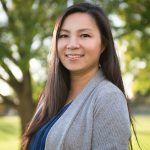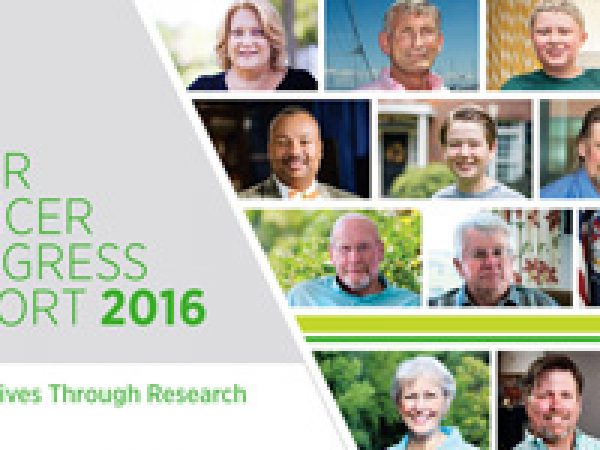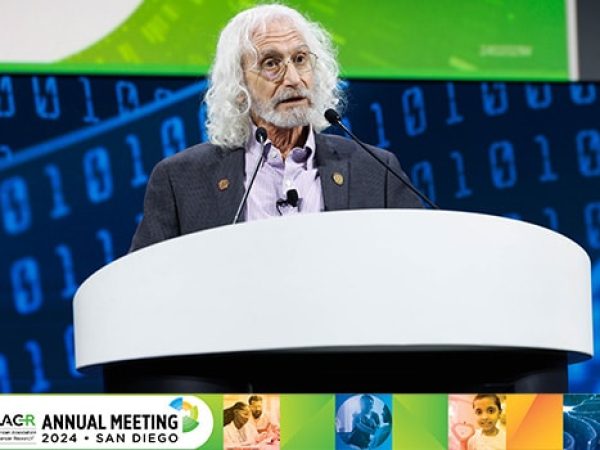How Can We Use Technology to Advance Population Science Research?
There has been a rapid expansion of technology in recent years, from artificial intelligence to intensive genomic sequencing to wearable trackers of fitness and health. How all of this technology can be effectively incorporated into population sciences research is an area of active inquiry.
To facilitate discussion and showcase research in this area, the American Association for Cancer Research (AACR) is hosting a conference, Modernizing Population Sciences in the Digital Age, in San Diego from Feb. 19-22. This four-day meeting will include discussions about the best use of mobile technology, how to best leverage large datasets, and how to incorporate modern technologies into existing and upcoming studies.
We recently spoke with conference co-chairs Melissa Bondy, PhD, associate director of Cancer Prevention and Population Sciences at Baylor College of Medicine, and Sophia Wang, PhD, professor in the Division of Health Analytics at City of Hope and the City of Hope Comprehensive Cancer Center about what to expect at the meeting.
Why are we having this meeting now, and what’s the broad scope of this conference?
Wang: The fields of population sciences and epidemiology are currently at an inflection point. We now have novel technological methods to engage with study participants, to analyze biological specimens, and overlap multiple layers of environmental and clinical data. There is a virtual tsunami of data, and we need to be able to handle these data in new ways. Studies that are being launched in this era need to engage in new methodologies to make this field successful. To advance cancer research and make discoveries, we need to quickly adapt to the new ways that research is being done. This meeting offers a training ground for researchers in the field and provides the latest information on how they can transform their study designs and approaches by incorporating advanced technologies.
Bondy: As someone who has observed advances over the years, I can attest to the fact that we have come a long way in our approaches to designing population science research studies and collecting data. As technology has changed over the years, we’re at the crossroads of big data and how to best analyze it to further our research, which is one of the important reasons why we wanted to have this meeting now.
What does “modernizing” the field mean to you?
Wang: The term “modernizing” applies to how we’re conducting our research. Many previous epidemiological studies relied on so-called “old technology,” such as paper questionnaires, paper consent forms, or collections of different types of data such as genetic data or questionnaire data or environmental data –which unintentionally resulted in data silos. The scope and amount of data that can now be collected has changed dramatically in recent years, and we have to evaluate how we can recentralize study procedures to facilitate efficient data management and analysis.
Bondy: “Modernizing” means that we need to keep ahead of the technology, and try to streamline the technology that’s available so that we can more easily use it in our research. We now share genetic data through dbGaP, a publicly available database; the UK Biobank is another example of an online resource that provides access to large datasets. There are new studies that are utilizing “big data” resources – the All of Us cohort, which is a study conducted by the National Institutes of Health, and AACR Project GENIE, which aggregates and links clinical-grade cancer genomic data with clinical outcomes from tens of thousands of cancer patients, are two examples that come to mind. It’s important for us to identify the best way to explore and utilize this swath of data, which will be a key part of this meeting as well.
How can we use large public databases to further the field?
Wang: Research takes time, particularly for rare cancers, where the data are scant. Having these publicly available datasets at hand helps enhance whatever discovery or validation efforts are needed, as any one clinical site would be hard-pressed to come up with sufficient numbers for many rare diseases. This is similar for research on minority populations – by pulling together data across studies, researchers can formulate a substantive result, instead of relying on information garnered from a singular source.
There are also many different layers of data that can now be integrated together. There are environmental exposures that can be combined and looked at simultaneously; we can overlay things like pesticide exposures, air pollution, and UV indices, in addition to participants’ environment, such as walkability and access to parks. This really allows us to seek out novel associations that we couldn’t really explore before.
Finally, the ability to evaluate multiple diseases at once to understand pleiotropy – risk factors that affect multiple endpoints – becomes possible with larger centralized data.
Bondy: As epidemiologists, we’re sort of the hub in the wheel where all of the spokes come together – we can take different elements of data, conduct computational analyses, combine genomics, clinical data, and exposure factors, and integrate all of these pieces to develop risk assessment models. I think that going forward, we’ll be able to use these resources to better identify and monitor more “at risk” individuals. At the end of the day, we want to integrate all of this data more efficiently to aid in population science research.
How can we best leverage wearable technology to help facilitate population science?
Wang: One aspect of wearable technology is the participant engagement angle. We now have a whole new way of communication; we can remind patients about taking certain medications, and we can omit some follow-up visits by monitoring their vitals remotely. All of these data are collected electronically and automatically uploaded and centralized. This means that the transfer of data is a lot more efficient; in the past, the data came in from several different sources and in different forms.
Bondy: We can also use wearables for clinical practice – clinicians can monitor daily heart rate and blood pressure over time and intervene quickly if something looks abnormal. Wearable technology could help us to monitor patients during clinical trials and aid in intervention studies. Additionally, because the data are downloadable, we can access the data quickly and reliably, which will streamline the way we conduct research. There’s a dedicated plenary session based on wearable technology at the conference.
What are some of the challenges the field faces in adapting to new technology?

Wang: Change is hard. And it’s not just changes for the researchers; it’s changes for the participants, too. A lot of ongoing studies are a combination of old technology and new technology, and we’re trying to figure out how to integrate more efficiently. There’s a plenary session devoted to discussing how to navigate ongoing studies in the field.
Bondy: Even though we have all the latest technology at our disposal, the field is not there in terms of using it effectively. Personally, some of the challenges that I’m facing is getting access to all of the clinical data. Additionally, even though we want to use novel technology, we still have issues related to disparities, where there are enormous challenges in getting individuals from minority and underserved populations to participate.
What are you most looking forward to at this meeting?
Wang: We have a wonderful list of speakers, including our keynote speakers, who are really on the forefront of technological advances and have a good pulse on how the field is evolving. Our meeting attendees are those who are really pushing the envelope; these are the people who are utilizing these new technologies and are really thinking of ways to move this field forward. I’m excited to learn from them.
Bondy: I’m looking forward to learning about novel ways to look at our studies. Our field has a team approach when it comes to research – everybody has a different piece that they can bring to the table, and working together in teams helps us move the science forward. I hope that the attendees develop some new collaborations and have some fruitful conversations!
Interested in learning more about genomics and big data? Check out this collection of articles selected by AACR editors that highlights recent studies published in this area.





